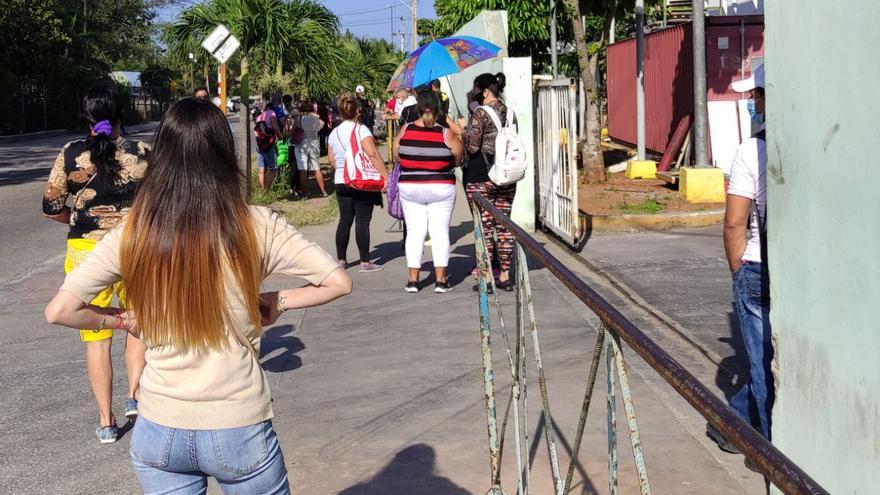
![]() 14ymedio, Juan Diego Rodríguez, Havana, 15 March 2021 — Not a year has passed since their opening and the stores that sell food and cleaning products in foreign currency are already going through a crisis. Little supply and very long lines mark the days in the most criticized shops in the country, the only ones, however, that still have more than a dozen products on their shelves.
14ymedio, Juan Diego Rodríguez, Havana, 15 March 2021 — Not a year has passed since their opening and the stores that sell food and cleaning products in foreign currency are already going through a crisis. Little supply and very long lines mark the days in the most criticized shops in the country, the only ones, however, that still have more than a dozen products on their shelves.
“It is not worth coming here, among the resellers and the shortage of supplies, this looks like a bodega,” as the ration stores are called, a customer told 14ymedio, this Monday, while waiting on the outskirts of the market that sells in freely convertible currency (MLC) on San Rafael Street in Havana. “I arrived at 5:15 in the morning and the line was was doubled back. Where were so many people going out to if the curfew is until five?”
The markets in MLC have become the new modus vivendi of thousands of Cubans who have a magnetic card with foreign currency. They buy grains, meat products, dairy products and preserves that they then resell in the informal market. Eager customers pay others to wait for them in the long lines, to avoid contagion by Covid-19 and also because they don’t have access to hard currency.
“They are out of stock, but if you compare them with the stores that sell in Cuban pesos, they seem luxurious,” a customer reflects on the outskirts of the Boyeros and Camagüey markets. “Everyone who has gone out today, the only thing they have is peas and malt, but I’m here because I need to buy yogurt and flour,” he says. “A few years ago I didn’t have to stand in a line for beef, but now you have to stand in line even for bouillon cubes.”
The resellers do not use the official exchange rate for the dollar, set at 1 in 24, but instead are guided by the price of the fulas [dollars] in the informal market. “People complain that the merchandise is expensive but I’m selling this large can of concentrated tomato puree for 800 pesos because it costs me about 18 dollars, plus a whole morning. I put the dollar at 47 CUP [Cuban pesos] so I’m almost giving away the merchandise.”
Currency stores have caused deep discontent among broad social sectors. Faced with the avalanche of popular complaints about the social differences that these markets deepen, the Minister of Economy, Alejandro Gil, tried to calm things down last December and assured that the opening of foreign currency stores for the sale of food and cleaning products was “a decision of social justice and socialism.”
“An undersupplied market does not attract foreign currency,” the minister explained then, referring to what many Cubans have classified as a “monetary apartheid” that divides society between those who have dollars to buy products in these shops and those who must meet their needs in the network of stores that sell in national currency.
However, to the same extent that a large part of Cuban society criticizes the opening of these shops, others have seen their resources grow, serving as a bridge between merchandise in dollars and anxious customers who cannot find these products in the stores that sell in Cuban pesos or convertible pesos.
“Call me for more details on what I’m getting tomorrow. Top-notch merchandise from the dollar stores,” reads an ad. “Leave the Line to me and avoid leaving the house, from the market to your table,” adds the classified. “Don’t worry, I’ll take care of it,” specifies the short text that invites you to follow “the offers on WhatsApp.”
____________
COLLABORATE WITH OUR WORK: The 14ymedio team is committed to practicing serious journalism that reflects Cuba’s reality in all its depth. Thank you for joining us on this long journey. We invite you to continue supporting us by becoming a member of 14ymedio now. Together we can continue transforming journalism in Cuba.
